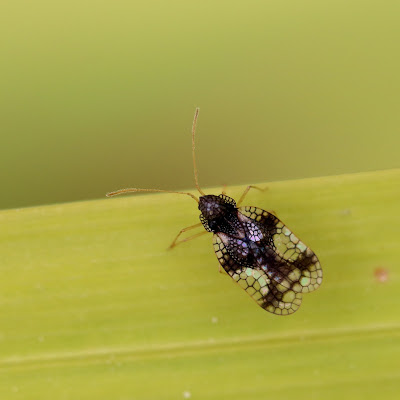 |
| Fieldfare (In this case in Northern Europe in Sweden) |
In terms of providing shelter, ivy provides plenty of
nesting sites for birds like the robin, dunnock and wren. It provides a good tangle of stems with
plenty of leaf cover and is usually growing over a good solid wall or fence
that offers a bit of insulation and protection from the wind. The holly too provides nesting sites for many
birds. The prickly leaves make it very difficult
for ground-based predators to climb into.
I recommend that you don’t clear up dead holly leaves from beneath the
tree as cats won’t go anywhere near it.
The fact that holly and ivy don’t lose their leaves in winter means that
birds can build nests in early spring that would be otherwise exposed in a
deciduous tree before its leaves have sprouted.
Of course, there are
animals other than birds that feed and take shelter in holly and ivy, not least
of which is the holly leaf miner. This
is a species of fly that lays its eggs in the leaf. When the eggs hatch the larva (maggot) eats
the inside of the leaf between the tough outer layers. This eventually pupates and emerges from the
leaf as an adult fly – if all goes well, that is. There are a couple of species of parasitic
wasp that lay their eggs inside the larva which hatch and eat the larva from
the inside. It’s gruesome but the holly
has indirectly provided food and shelter for yet more species. And it doesn’t end there because birds like
blue tits and great tits can get at the larvae before they emerge, to add yet
more species to the list provided for by the tree. Even though the holly bears the crown, the
ivy isn’t left out as regards leaf miners.
The ivy leaf miner is a micro-moth larva which starts eating inside the
leaf but when it is big enough to moult, it leaves the leaf and spins a cocoon
outside. The micro-moth is the small
grey tortrix (Cnephasia incertana)
which is a common species that we often find in the moth trap. (It isn’t restricted to ivy; it mines several
other plant species.) The holly and the ivy each support only one
species of leaf miner which, considering the large number of leaf miners, makes
them quite a selective host.
Though the bark of most trees carries mosses and lichens, I
don’t remember seeing lichens on the smooth bark of holly – hmmm, more research required.
* The ivy bee was described as new to science as late as
1993 from specimens found in southern Europe.
It was first found in the UK in 2001.




































